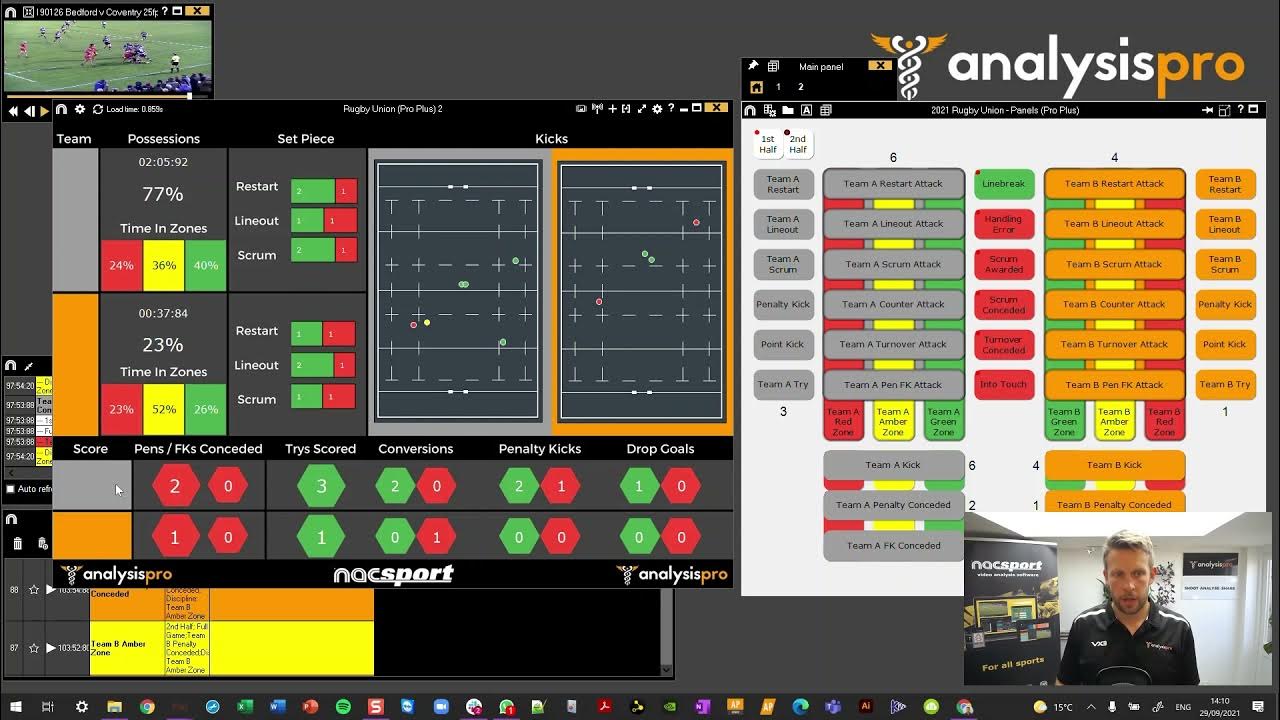iCn3D Viewer Tutorial, Part 2
Summary
TLDREl video ofrece una guía detallada sobre la herramienta de análisis ICM3D, centrando la segunda parte en las herramientas de análisis. Se discuten las opciones para visualizar enlaces de hidrógeno, potenciales electrostáticos y mutaciones de residuos, así como la posibilidad de mostrar interacciones en diferentes formatos como redes 2D y gráficos de fuerzas. Además, se exploran herramientas para la alineación estructural y secuencial, y se muestra cómo integrar ICM3D en una página web usando iframe o a través de scripts Node.js. Finalmente, se ofrecen instrucciones para construir e ICM3D y contribuir a su desarrollo, destacando la facilidad de agregar nuevas clases y funciones.
Takeaways
- 📊 Se pueden mostrar enlaces de hidrógeno en interacciones mediante el menú de análisis en ICM3D.
- 🔍 Se pueden seleccionar diferentes formatos de visualización para las interacciones, como la red de interacción 2D o el gráfico de fuerzas dirigidas falsas.
- 📈 El potencial electrostático se puede visualizar en la superficie o en un mapa de potencials equipotenciales para proteínas y ligandos.
- 🧬 La herramienta de mutación permite especificar múltiples mutaciones y visualizar sus efectos en 3D.
- 🤝 Las herramientas de alineación estructural incluyen alineación de estructuras y alineación de cadenas múltiples.
- 🔗 Se puede realizar alineación de secuencia a estructura utilizando herramientas como BLASTP para encontrar coincidencias en la base de datos PDB.
- 📑 Se pueden agregar anotaciones en la ventana de secuencia, permitiendo comparar la proteína con una estructura 3D y ver interacciones y dominios.
- 🌐 ICM3D se puede integrar en una página web utilizando iframe o siguiendo un ejemplo de código para widgets interactivos.
- 📚 Se pueden definir opciones y comandos personalizados para el visualizador ICM3D en una página web.
- 🚀 ICM3D ha sido actualizado a clases ES6, lo que permite escribir scripts Node.js basados en la biblioteca.
- 🛠️ Para contribuir a ICM3D, se pueden agregar nuevas clases y modificar el archivo module.html siguiendo las instrucciones proporcionadas.
Q & A
¿Qué se puede hacer en el menú de análisis de icm3d?
-En el menú de análisis de icm3d, se pueden mostrar enlaces de hidrógeno, seleccionar diferentes tipos de interacciones, visualizar la red de interacciones en 2D y 3D, y utilizar herramientas como la mutación de residuos y la alineación estructural.
¿Cómo se pueden visualizar las interacciones en diferentes formatos?
-Las interacciones se pueden visualizar en formato de red de interacción 2D, mapa de interacción introductorio, gráfico de red falsa directiva y en una tabla para seleccionar y resaltar cada interacción en 3D.
¿Qué tipo de interacción se representa con líneas rojas en la red de interacción 2D?
-Las líneas rojas en la red de interacción 2D representan interacciones de categoría pi.
¿Cómo se puede personalizar la visualización de la interacción en icm3d?
-Se puede personalizar la visualización de la interacción en icm3d seleccionando cada tipo de interacción y utilizando el enlace compartido para reproducir la vista personalizada.
¿Qué opciones hay para visualizar el potencial elástico en icm3d?
-Para visualizar el potencial elástico en icm3d, se pueden mostrar el potencial en la superficie o el mapa de potencial equipotencial.
¿Cómo se puede especificar una mutación de residuos en icm3d?
-Se puede especificar una mutación de residuos en icm3d yendo al análisis de mutación, donde se pueden definir múltiples mutaciones y visualizarlas en 3D.
¿Qué es el programa scat que utiliza icm3d para las mutaciones?
-El programa scat es una herramienta utilizada en segundo plano por icm3d para manejar y visualizar las mutaciones de residuos.
¿Cómo se puede alinear estructuras en icm3d?
-En icm3d, se puede alinear estructuras utilizando herramientas como la alineación estructural VAST, la alineación de cadena múltiple y la alineación de secuencia a estructura.
¿Cómo se puede integrar icm3d en una página web?
-Se puede integrar icm3d en una página web utilizando un iframe o siguiendo el ejemplo de código proporcionado para interactuar con los resultados de la página web.
¿Qué cambios se han implementado en icm3d para facilitar su uso en node.js?
-Se ha migrado icm3d a las clases ES6, lo que permite escribir scripts de node.js basados en icm3d y utilizar el paquete icm3d desde npm.
¿Cómo se puede contribuir a icm3d agregando nuevas clases?
-Para contribuir a icm3d agregando nuevas clases, se puede descargar el archivo zip de icm3d, modificar el archivo module.html, importar icm3d, agregar la nueva clase y luego utilizarla en la interfaz de usuario de icm3d.
¿Dónde se puede encontrar el código de ejemplo y las instrucciones para construir icm3d?
-El código de ejemplo y las instrucciones para construir icm3d se pueden encontrar en la página de GitHub de icm3d.
Outlines

Cette section est réservée aux utilisateurs payants. Améliorez votre compte pour accéder à cette section.
Améliorer maintenantMindmap

Cette section est réservée aux utilisateurs payants. Améliorez votre compte pour accéder à cette section.
Améliorer maintenantKeywords

Cette section est réservée aux utilisateurs payants. Améliorez votre compte pour accéder à cette section.
Améliorer maintenantHighlights

Cette section est réservée aux utilisateurs payants. Améliorez votre compte pour accéder à cette section.
Améliorer maintenantTranscripts

Cette section est réservée aux utilisateurs payants. Améliorez votre compte pour accéder à cette section.
Améliorer maintenantVoir Plus de Vidéos Connexes

🚨 ¡¡¡ALERTA!!! 🚨 ¿Llegarán CAÍDAS SERIAS a los MERCADOS? 📉 Análisis Técnico Detallado 📊 Parte II

Qué es el Árbol de Problemas: Concepto, componentes y Ejemplo

⛅Nuevas herramientas para análisis de clima en linea con EPW | Alternativa al Climate Consultant 6.0

Nacsport Rugby Union Sample Template and Dashboard Tutorial

Análisis PESTEL. fácil rápido y sencillo. 🙋🏼♀️

ESTUDIO DE MERCADO 1 3
5.0 / 5 (0 votes)
